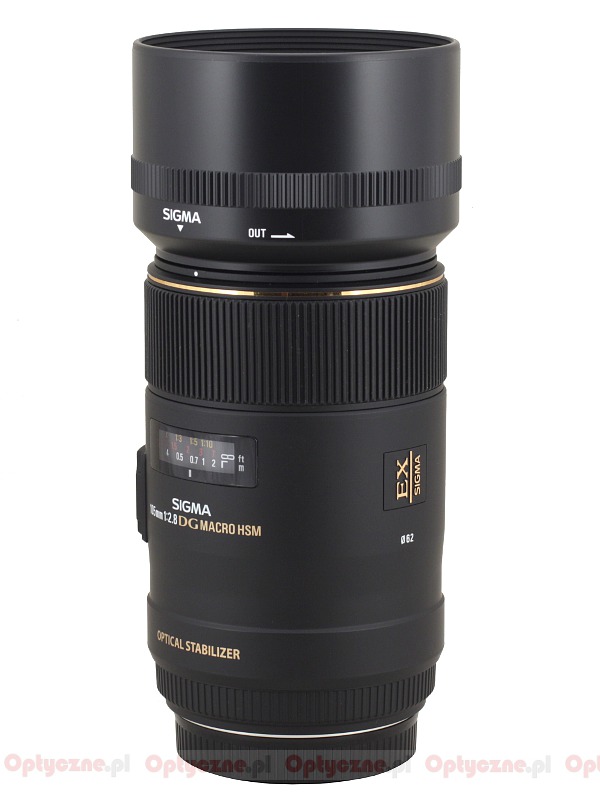
Setting the (working) aperture directly on the lens may also be something to get used to but it's really an acceptable compromise here. The "peaking" feature doesn't really work here which is probably also a side effect of its fisheye nature. in very close focus situations) you can, of course, use magnified Live-View to fine-tune the focus manually. The lack of AF is basically a non-issue due to the immense depth-of-field provided by such a lens - for most scenes just set the focus distance to 2m and then be happy ever after. Typical for its species it does not support any front filters. The physical length of the lens remains constant throughout the focus range. It's somewhat "fiddly" to attach the front cap but it's certainly a good idea to take advantage of it to protect the lens during transportation. The bulb-like front elements makes it impossible to mount filters but that's just normal for such a lens. The (plastic-)aperture rings feels a bit less sturdy but it works reliably with distinctive "clicks". The fairly long main body is made of metal and the rubberized focus ring operates smooth and it's even damped just like in the old days. well, be prepared for a surprise - it's actually very good. If you conclude that such an affordable lens has a sloppy build quality. The Sony E mount Samyang 8mm f/2.8 UMC Fisheye II Lens is a prime fisheye lens specifically designed for APS-C sized image sensors. In case you wonder about the L bracket attached to the NEX-5 - this is a accessory by JTec - which really works very well for stabilizing the camera on a tripod. Fisheye lenses are usually not cheap but the Samyang lens is available for just 260-320EUR!
#Sony e mount fisheye full
The Samyang 8mm f/3.5 is a dedicated full frame fisheye lens for APS-C cameras with an immense field-of-view - 180 degrees so one of the obstacles of using such a lens is to avoid that your feet will be part of your scene. Samyang E-mount lenses don't feature any electronics so while you will be able to mount this fisheye lens without an adapter you'll have to live without AF, a camera-controlled aperture and EXIF data.


Samyang lenses are also marketed by several other companies like Vivitar (7mm f/3.5), Bower (8mm f/3.5), Opteka (6.5mm f/3.5), Walimex (8mm f/3.5), Rokinon (8mm f/3.5) and probably a couple more. However, according to Foto-Tip (the European Distributor) Samyang is preparing a dedicated Fisheye with smaller dimensions specifically for the Sony NEX. The converter has been specifically designed for the FE 28 mm F2, and therefore offers expressive fisheye perspective with excellent image quality from infinity down to the closest focusing distance, without compromising the basic image quality. The naming is a bit confusing because it actually suggests that the lens is meant for Sony NEX VG-10 camcorder only but it is actually a "normal" E-mount lens and as such also compatible to conventional NEX cameras as well. Dedicated fisheye conversion lens for the FE 28 mm F2 provides 16 mm focal length with fisheye perspective and a full 180 angle of view (diagonally). They offer the Samyang 8mm f/3.5 Fish-eye CS VG10. That said there's at least one other manufacturer of E-mount lenses - Samyang, a korean company. This issue will be solved, eventually, but this is still somewhat disappointing especially when compared to the micro-four-thirds system. Shooting the horizon? Depending on your composition, a fisheye can be used to enhance the curvature of the earth.Review by Klaus Schroiff, published August 2011Īs of the time of this review the Sony NEX system has a significant shortcoming - the lack of lenses. They also produce sharper images with brighter colours than a rectilinear lens. Also question is, what is a fisheye lens good for?įisheyes are almost always used for underwater photography where there are no straight lines to worry about.

Here's a general guideline: If you're shooting with a full frame camera like the Canon 5D Mark II or Nikon D700, you need a lens with a focal length of between 15 or 16mm. To achieve the “fisheye effect” you would need a lens with a focal length of between 8 or 10mm.

Regarding this, which fisheye lens should I buy? Fisheye lenses are far less versatile, but they can still be really fun and produce some fabulous images. But it will also create an interesting and unique look with curvature and distortion. If a creative perspective is your goal, a fisheye lens will achieve all the same things as a wide angle lens. Circular fisheye lenses generally capture a 180-degree angle of view or larger which is projected as a circle within the image frame. There are two main types of fisheye lenses Circular and Full-frame Fisheye and they produce very different results. What are the two types of fisheye lenses? Meike 8mm f/3.5 Ultra Wide Rectangle Fisheye Lens for Sony E Mount-Fast Delivery Lens structure: 8 groups 11 elements provides satisfactory optical performance.


 0 kommentar(er)
0 kommentar(er)
